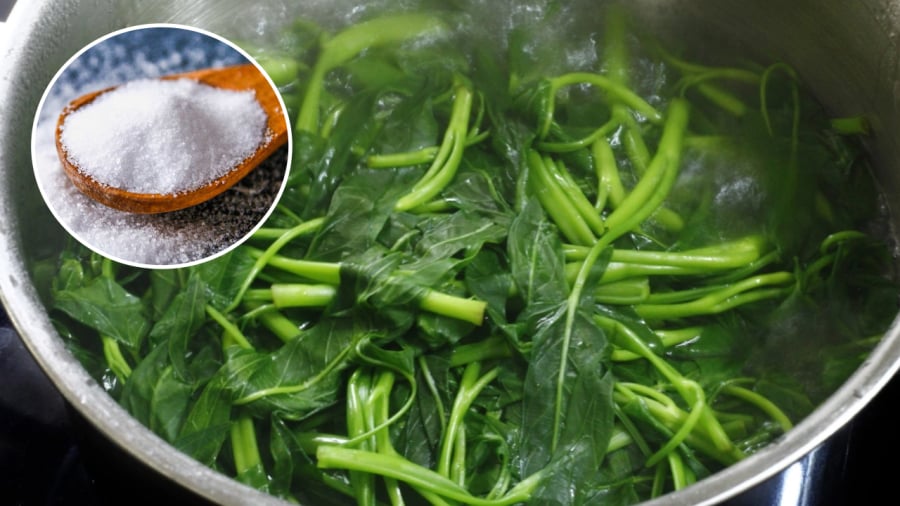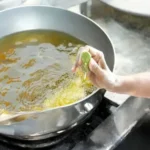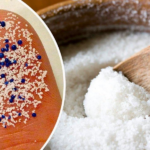Why Adding Salt to Boiling Water Can Help Vegetables Retain Their Green Color and Prevent Discoloration
Under certain temperature and pressure conditions, water boils and changes from a liquid to a gaseous state. This is known as the boiling point of water. When the vapor pressure of water equals the surrounding pressure, it reaches its boiling point. At a pressure of 1 atm (standard conditions), water boils at 100°C.
Adding salt to water alters the concentration of dissolved substances. This, in turn, changes the physico-chemical properties of water, including its boiling point. The boiling point of water can increase by a few degrees (if salt is added before heating) depending on the amount of salt added.
Chlorophyll, a key component in green vegetables, undergoes color changes when reacting with acids or alkalis under heat. These reactions can result in dark green, yellowish, or brownish hues.
To maintain the vibrant green color of vegetables, it is crucial to shorten the cooking time. Faster boiling helps limit the occurrence of these reactions.

Salt is typically added to the pot of boiling water before vegetables are immersed. Salt raises the boiling point of water, expediting the cooking process. Additionally, it helps retain vitamins in the vegetables. The presence of Na+ and K+ ions in salt also reduces the activity of H+ acid ions in the water, thereby minimizing the impact on chlorophyll and helping vegetables retain their green color.
Note that adding vegetables to the pot before the water reaches a boil, using insufficient water, or adding cold water during cooking can prolong the cooking time and lead to discoloration.
Moreover, salt enhances the flavor of boiled vegetables. However, care should be taken not to overuse salt, as the dish may become overly salty. Boiled vegetables are often served with various dipping sauces, so moderate salt usage is recommended. You can adjust the saltiness of the vegetable broth afterward to suit your taste. Nevertheless, excessive salt intake is discouraged for health reasons. The World Health Organization (WHO) advises that an adult’s daily salt intake should not exceed 5 grams.
Tips for Boiling Vegetables to Retain Their Green Color and Nutrients
When preparing vegetables, remove any wilted or damaged parts, including old stems. Rinse the vegetables thoroughly and let them air dry.
Ensure you use enough water to completely submerge the vegetables. Add a pinch of salt and heat the water. Once it reaches a rolling boil, carefully add the vegetables in batches, using a spoon or tongs to submerge them. Stir occasionally to ensure even cooking.
The boiling time will vary depending on the type of vegetable. Adjust the timing accordingly to avoid undercooking or overcooking, as this can affect their taste and texture.
While the vegetables are cooking, prepare a bowl of ice water. As soon as the vegetables are tender, remove them from the boiling water and plunge them into the ice bath for a few minutes. This rapid cooling helps halt the cooking process, preserving the vibrant green color and crisp texture.
If you prefer to serve the vegetables hot and choose not to use an ice bath, you can drain them and spread them out on a wire rack to cool. This prevents steam buildup, which can lead to discoloration. Once cooled, arrange the vegetables on a serving plate.
The Ultimate Guide to Splatter-Free Frying: A Secret Ingredient to Keep Oil in the Pan
Introducing a revolutionary way to reduce oil splatter while frying: a simple yet effective method that will transform your cooking experience. Unveil the secrets to achieving crisp and delicious fried food without the mess. It’s time to say goodbye to greasy countertops and hello to a cleaner, safer kitchen.
The Ultimate Spice Blend: Unveiling the Secret to Vietnam’s Culinary Magic
Introducing the two essential spices, packed with microplastic particles, that are indispensable in any Vietnamese kitchen. These spices are beloved by locals for their unique ability to elevate any dish with their distinct flavors. With just a sprinkle, they can transform mundane meals into culinary masterpieces. But are we really aware of the hidden dangers lurking in these seemingly innocent spices? It’s time to uncover the truth and make informed choices for a healthier future.






































